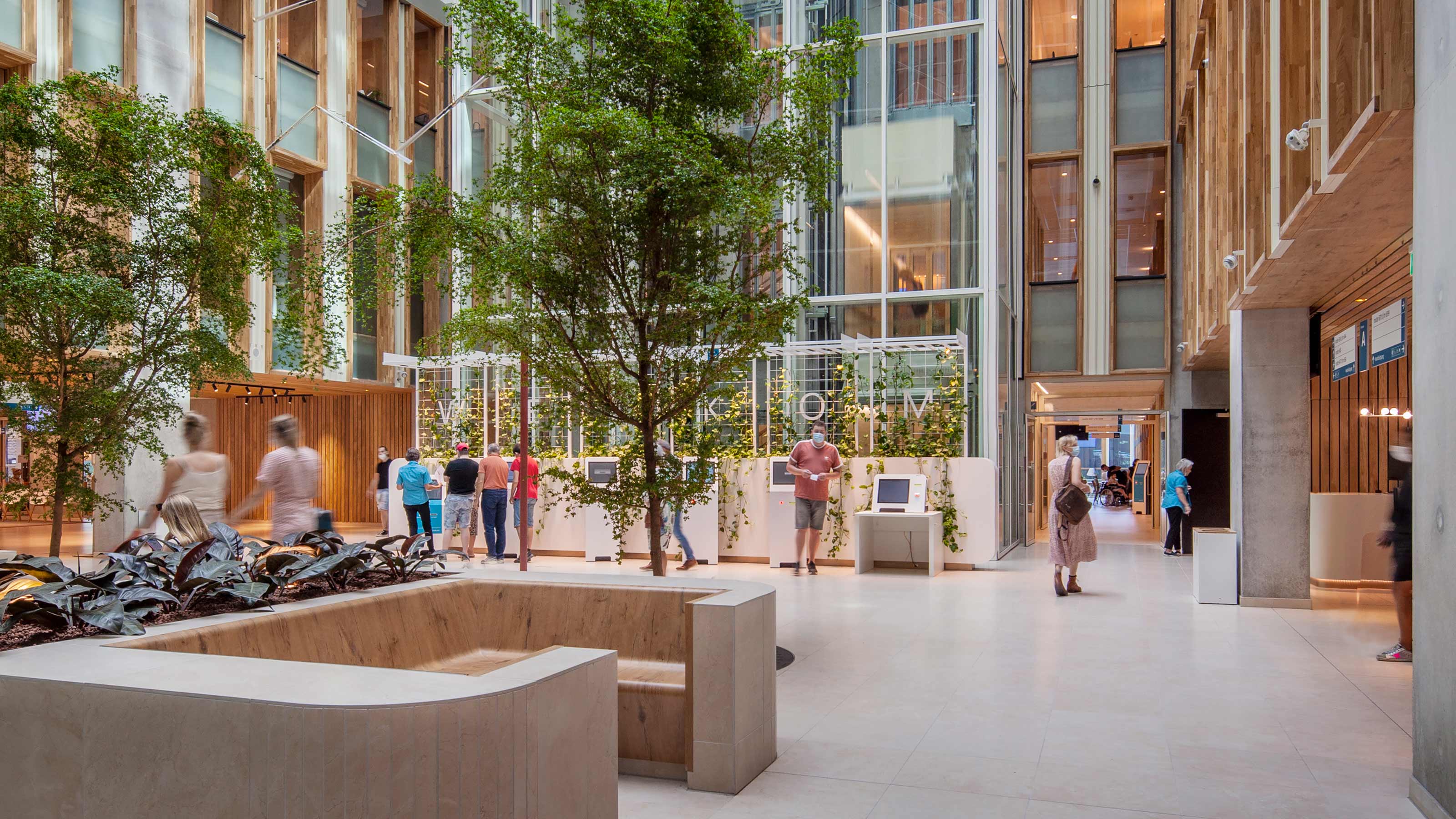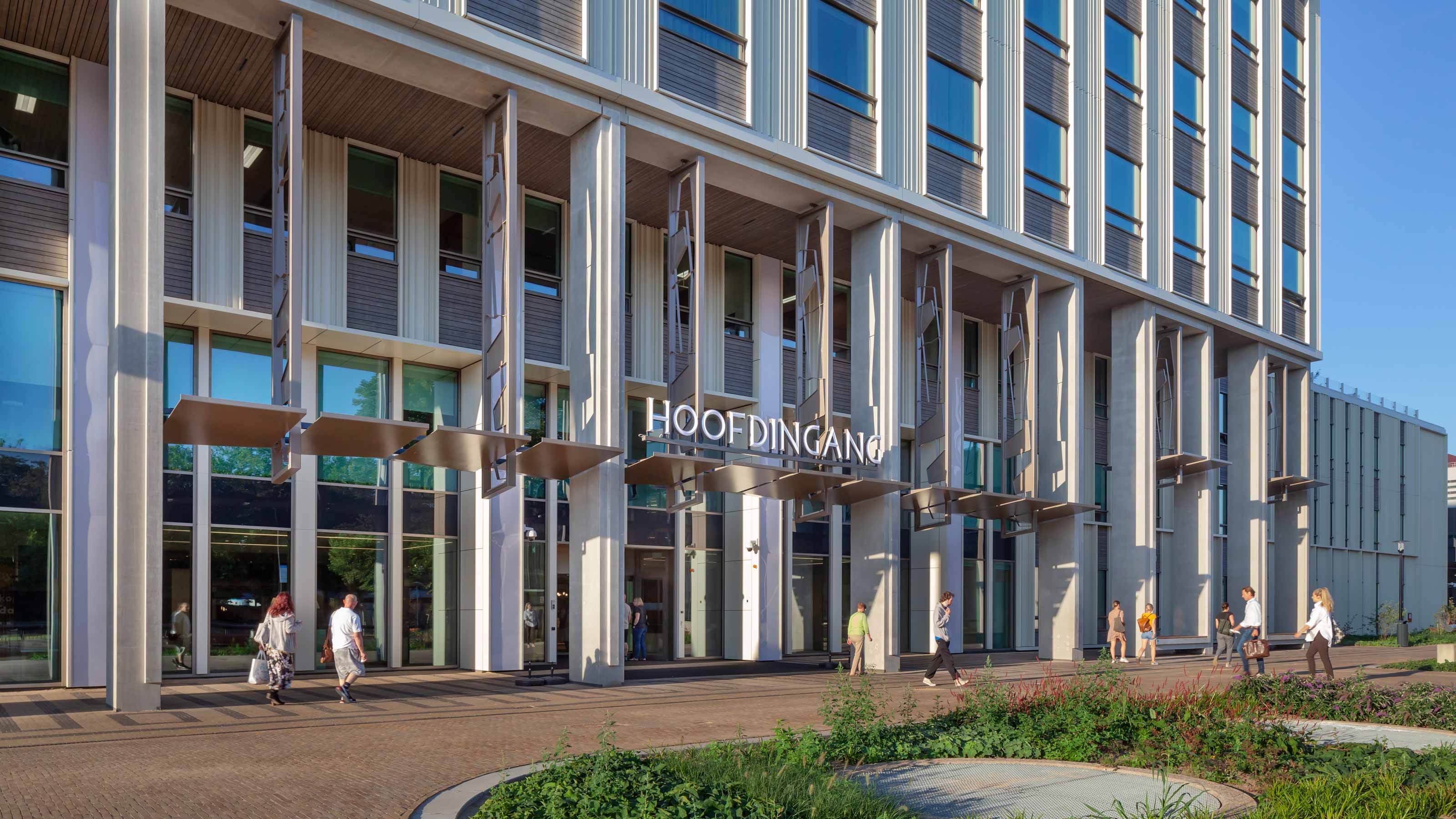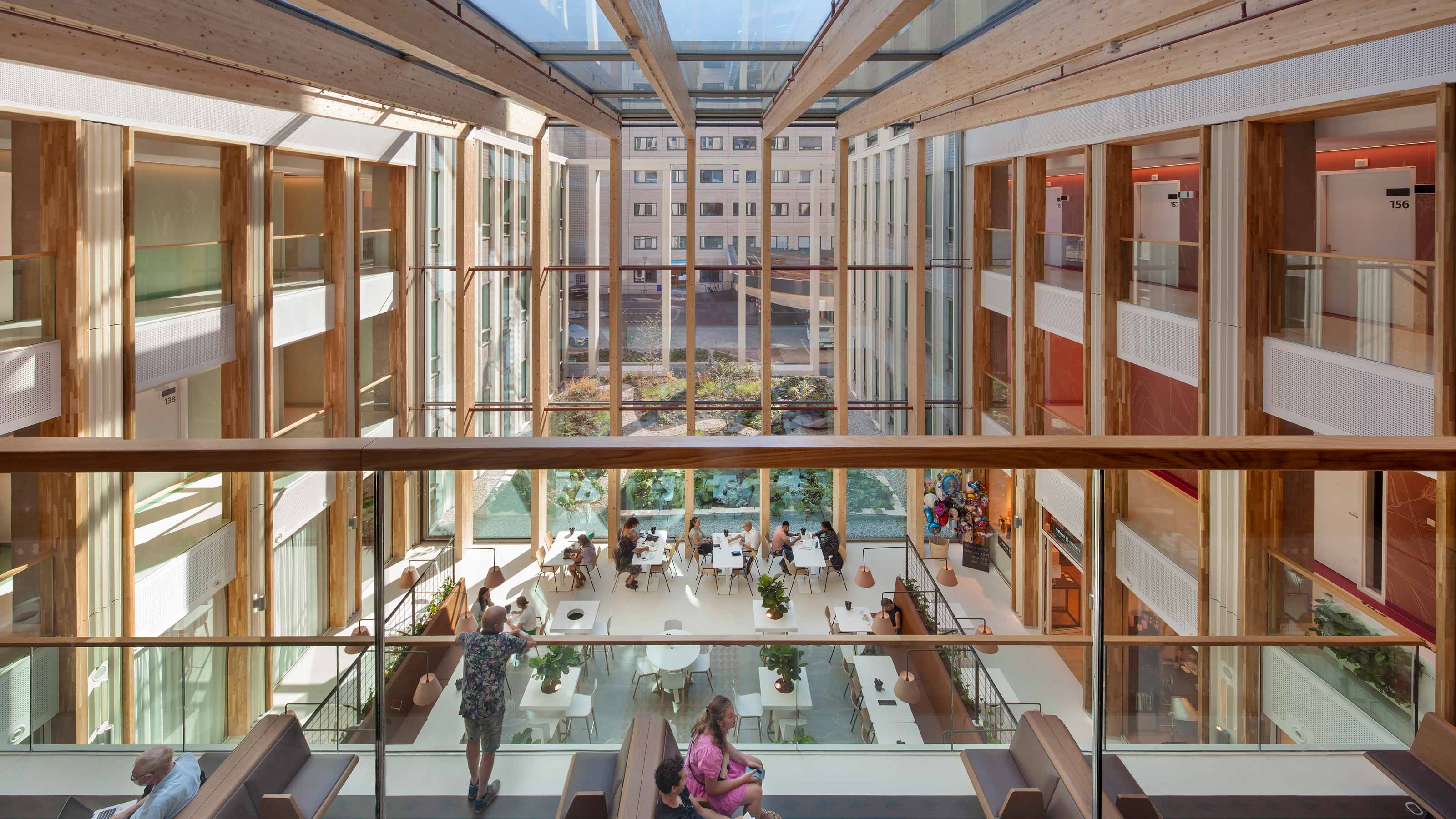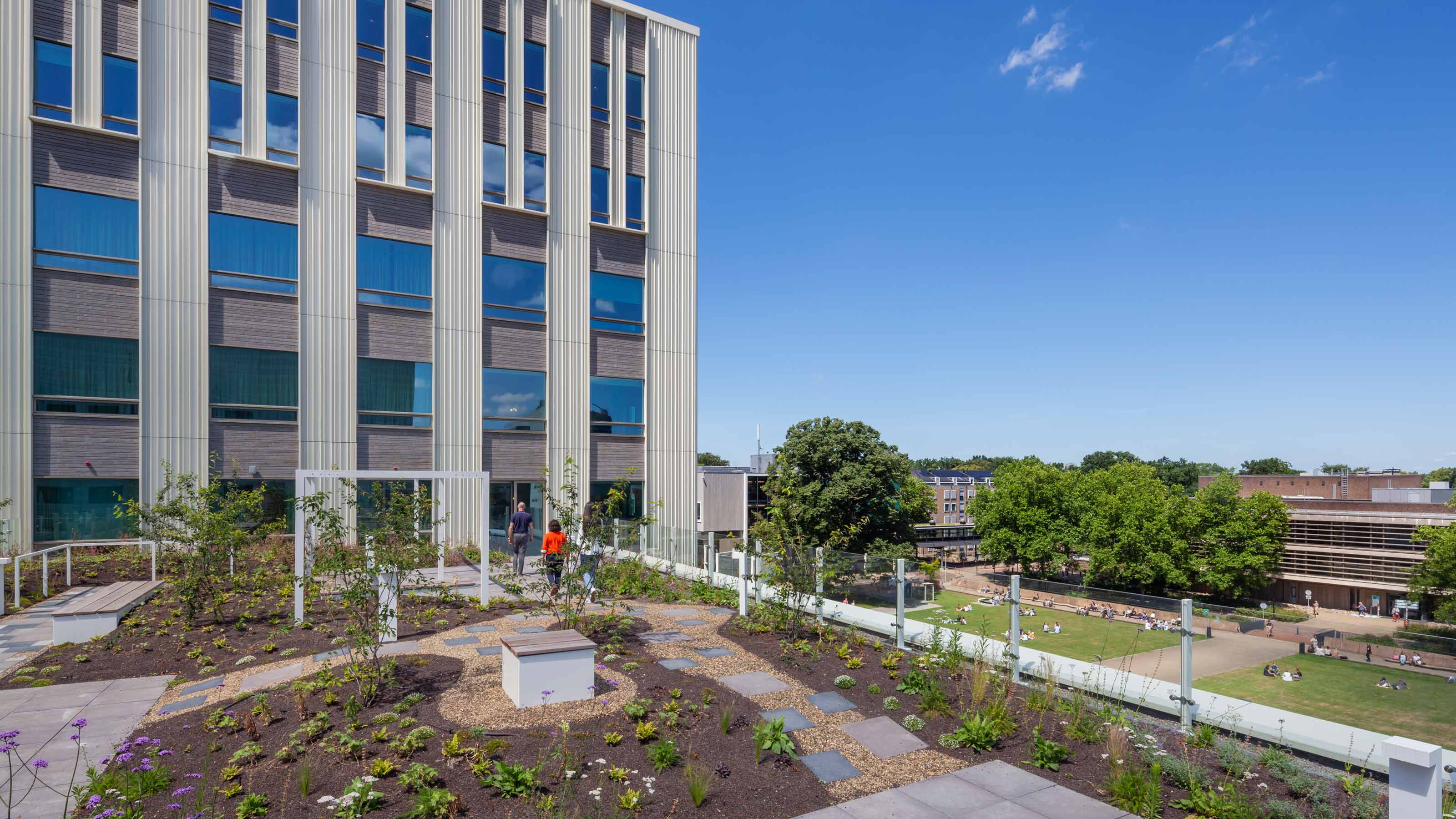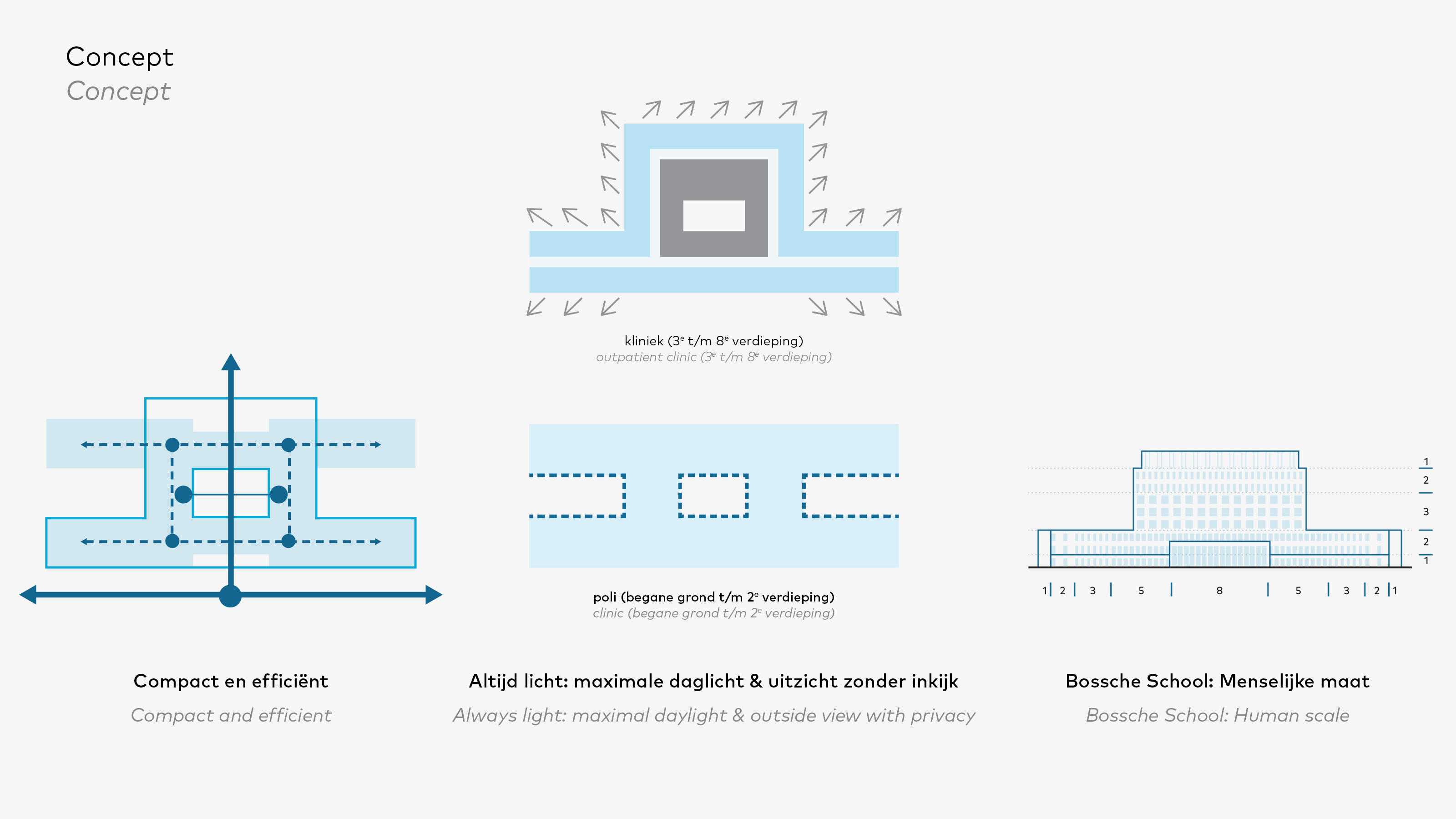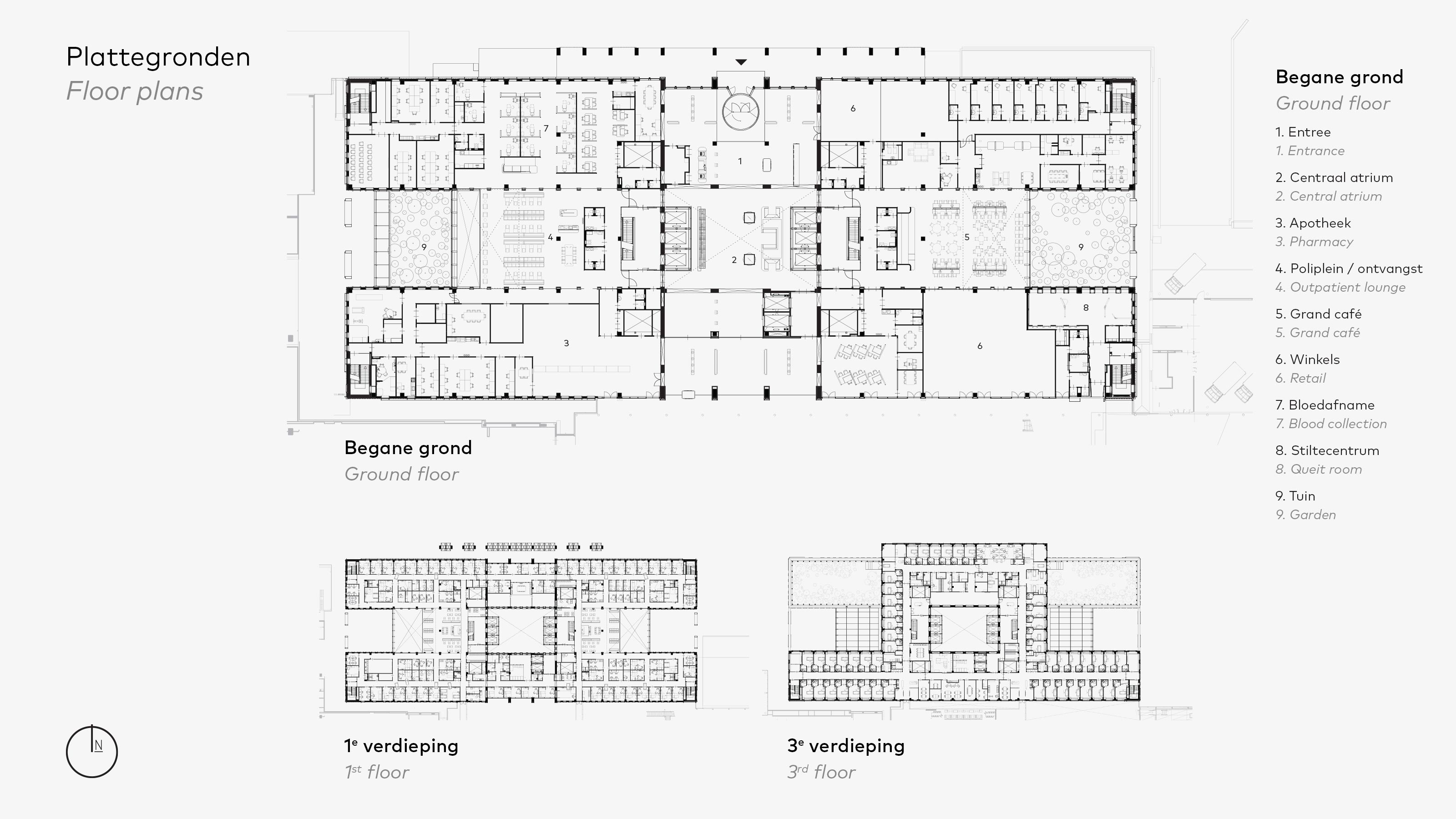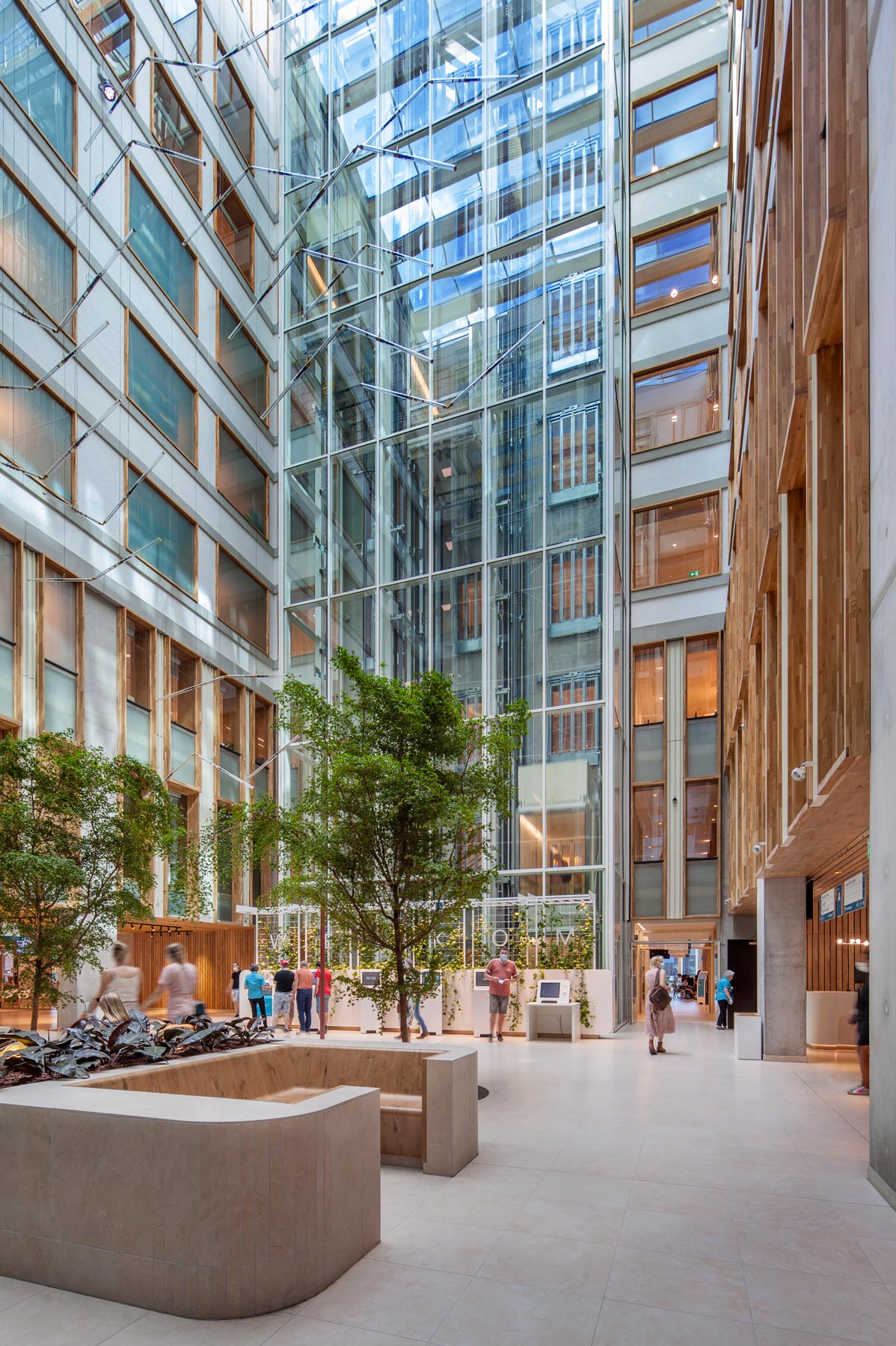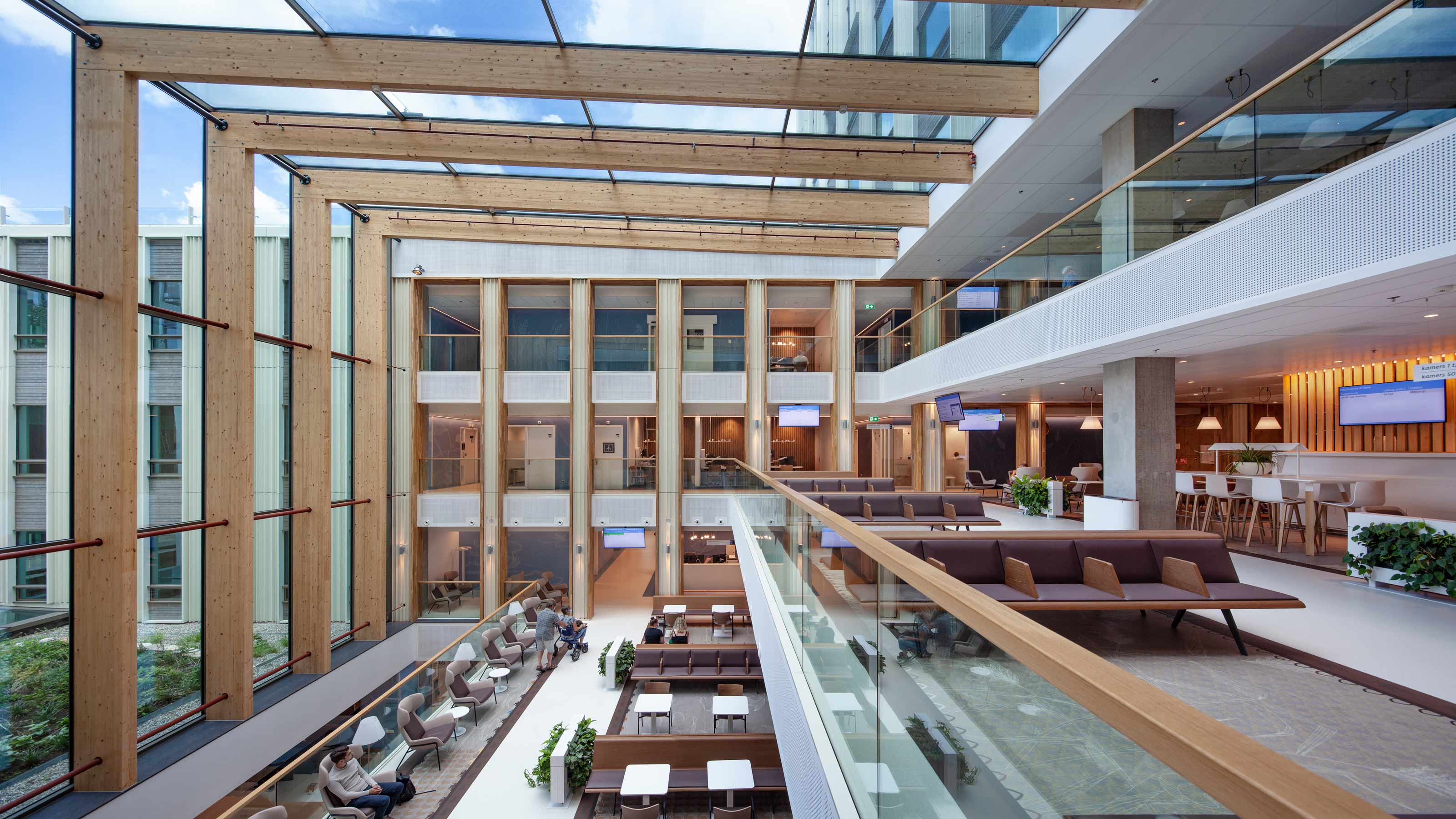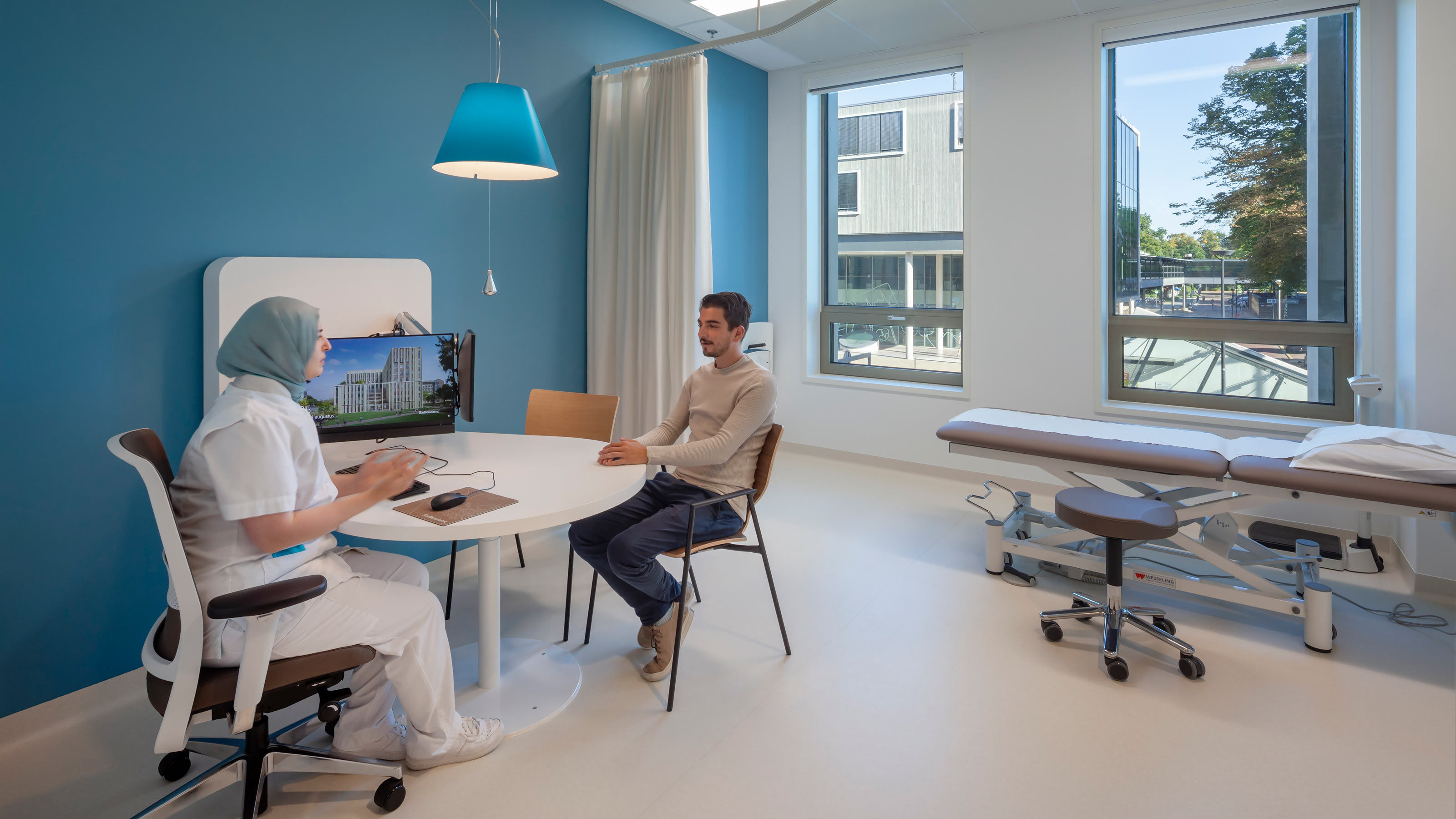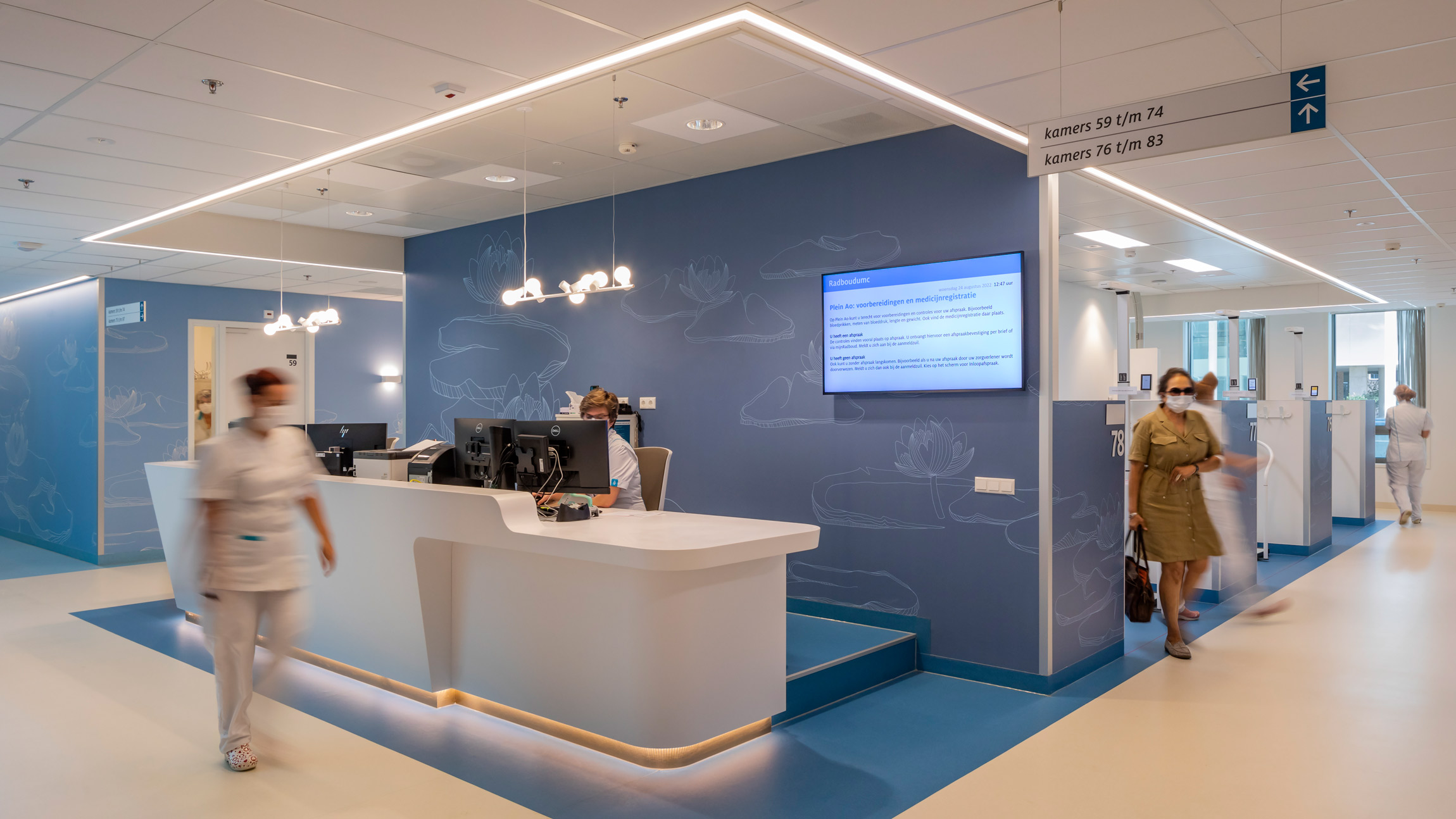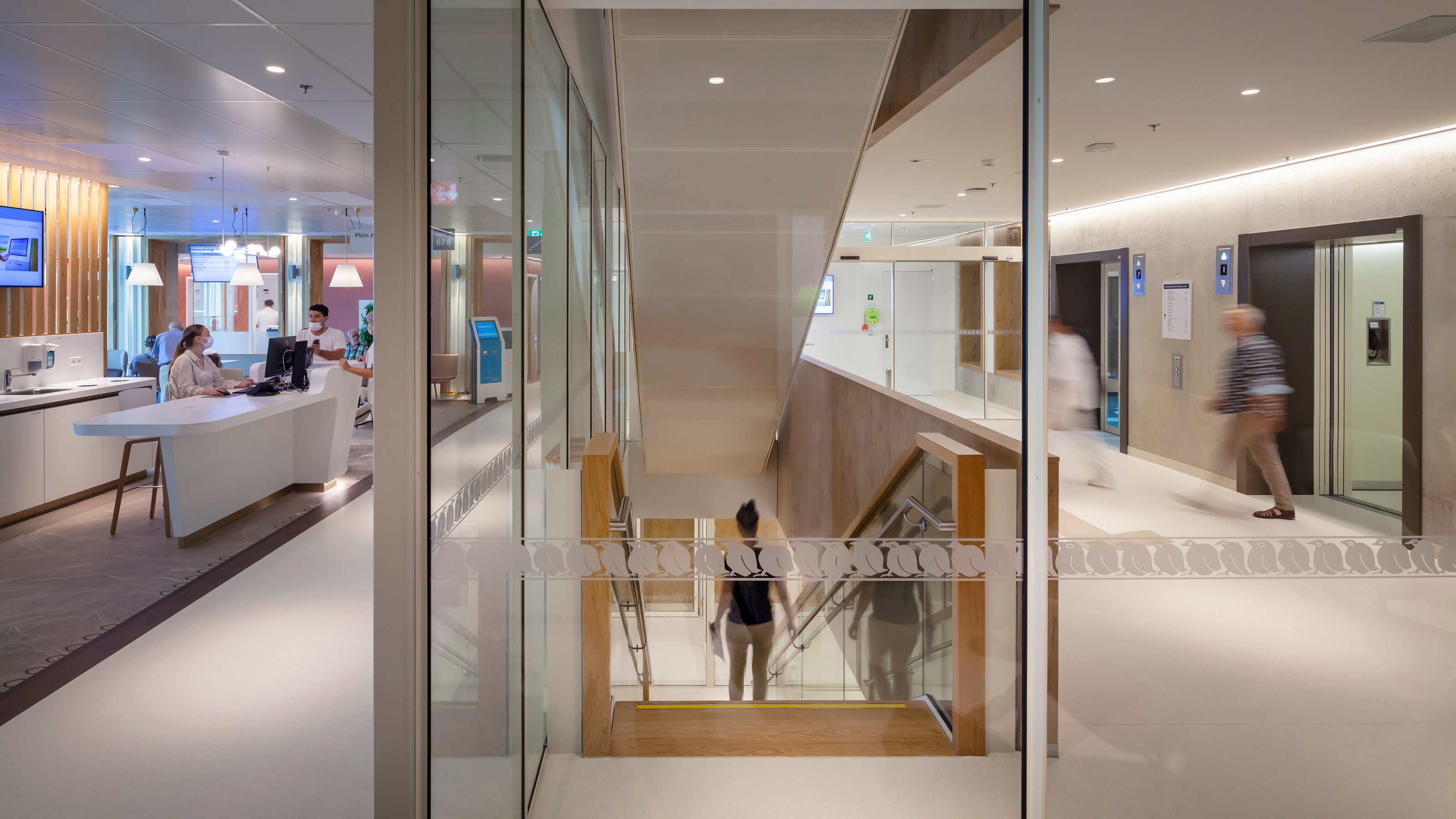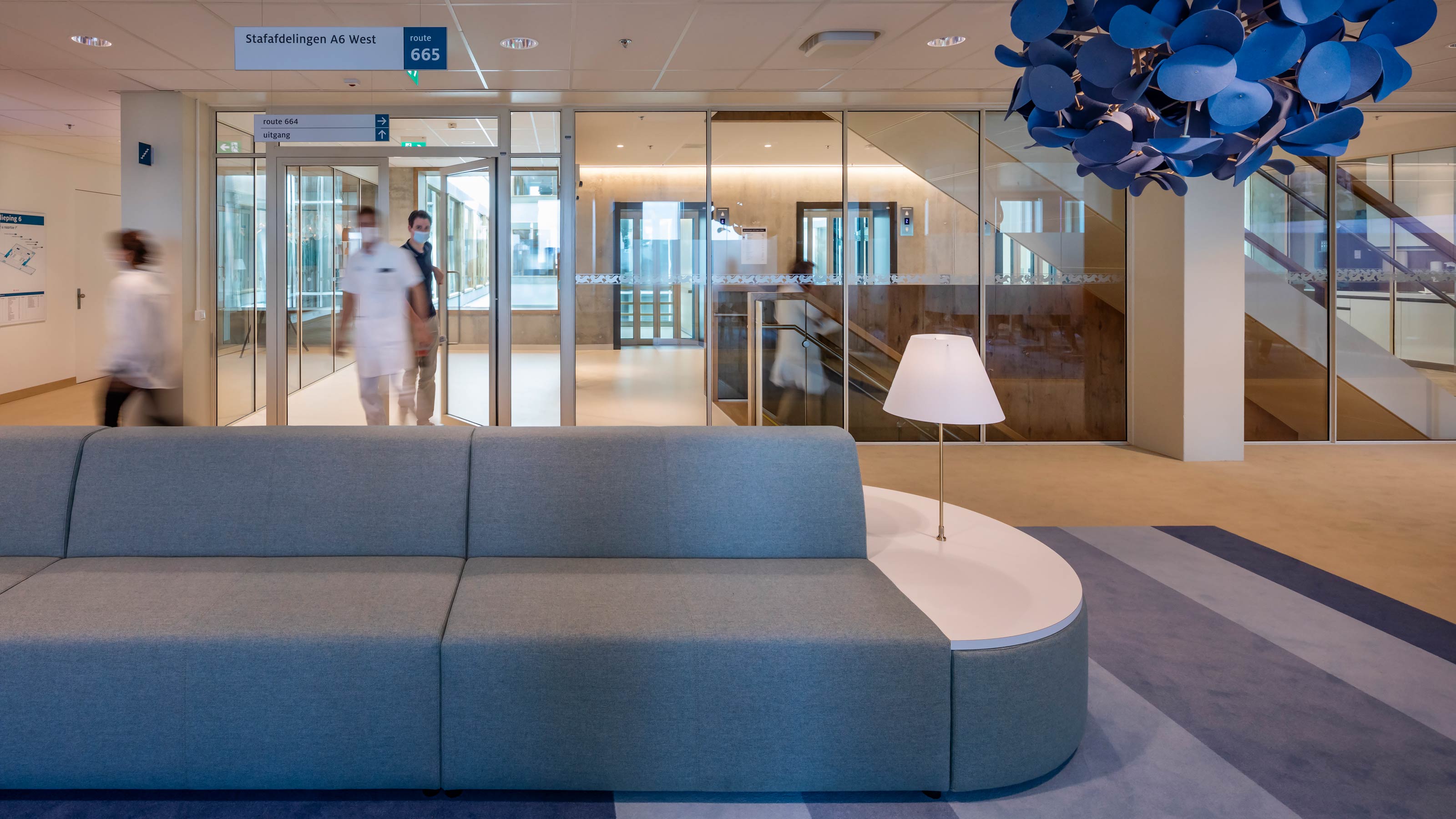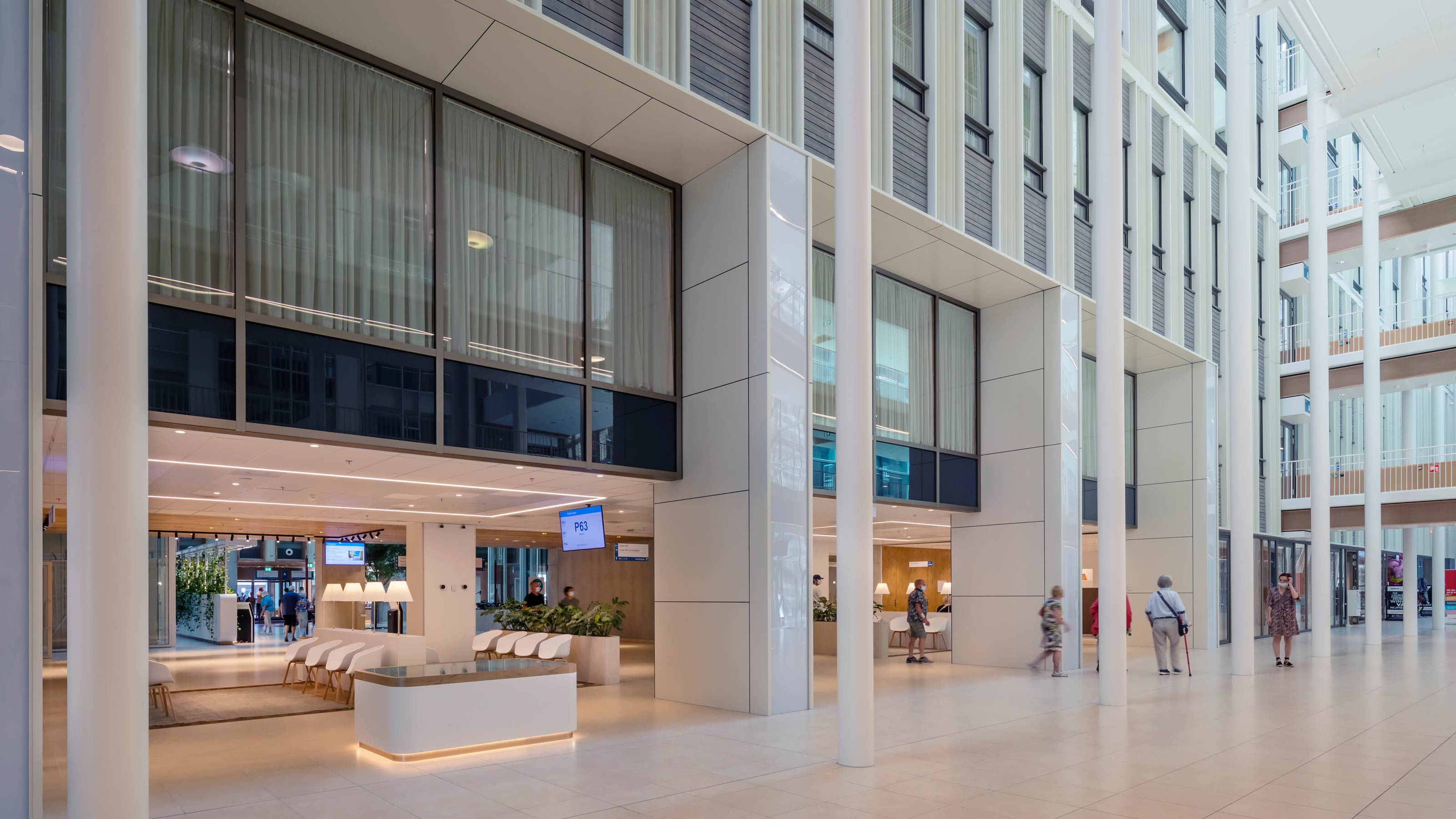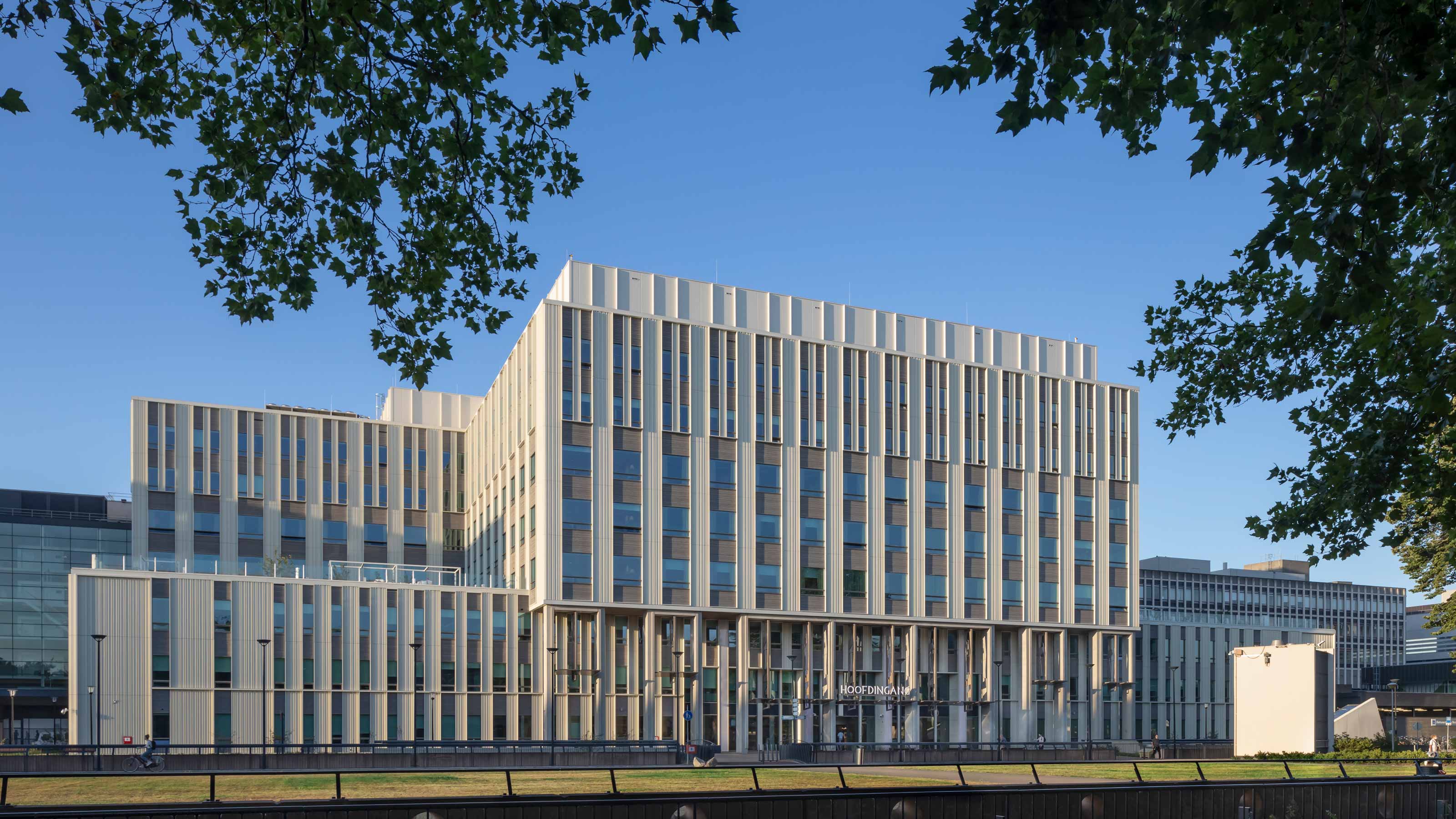Light, views and greenery in a calming care environment
The new main building marks the transition to a sustainable era. Numerous functions are smartly combined, facilitating a new way of working to a high professional standard.
View the entire projectThe new main building at Radboudumc offers a friendly and warm welcome. The inauguration marks the transition to a new healthcare campus that was first planned 30 years ago. In the 11-storey building – with about 46,000 m² of floor space, plenty of daylight and views of the surroundings – a green and salubrious environment has been created. Interacting, working together and sharing expertise are the key qualities. This is where the mission of Radboudumc comes to life: sustainable collaboration for personalised care that benefits public health.
Future-proof thanks to adaptable design
The Radboudumc mission is to be a leader in shaping sustainable, innovative and affordable healthcare. The new main building supports that aim perfectly. Especially in combination with other recent renovations and new development by EGM architects, the new main building forms the heart of the green campus and ushers in a sustainable and future-proof era. The clear layout of the main building, with strategically placed spaces for services and logistics, smartly adaptable audio-visual points and integrated technological innovations, offers the necessary freedom of layout for various specialisms. This distinctive, adaptive capacity forms the basis for the pleasant, sustainable and lasting use of the building. It also ensures that specialists from various professions feel welcome and comfortable. And that enables the building users to provide and receive personalised and innovative care, now and in the future.
We challenged EGM to make something special here, and they succeeded fantastically
René Bleeker, director of Radboudumc Building Project Office
Architecture that supports and stimulates
The architecture of the new main building is a modern interpretation of the Bossche School style, in which the distinctive qualities of Radboudumc clearly resonate: the humanism, the human scale, the connection with nature and the ‘character’ of the place (couleur locale). The familiar and authentic form of architecture supports the identity of Radboudumc and blends harmoniously with the existing monumental buildings – in Bossche School style – on the campus grounds. The restrained design is based on the ideal dimensions derived from the golden ratio. Although some floors are as big as a football pitch, they never feel vast, but rather calming and familiar. The dimensioning, clear spatial composition and circulation contribute effectively to the wellbeing and health of the healthcare providers and patients.
Always bright, always views
Plenty of daylight, views of courtyard gardens from everywhere, and striking through views make every space pleasant. Working and recovering in natural lighting conditions – all day long – supports the biorhythm and is crucial for physical and mental recovery. The seven-floor-tall central atrium draws daylight into the heart of the building. Mature trees and green plants bring nature indoors. Stepped outpatient clinics, reception areas and the restaurant are located behind a glass facade, which smoothly transitions into a glazed roof. That makes nature both visible and tangible. Dynamic levels of lighting play an essential role in creating a pleasant and healthy indoor climate.
The new building is the most sustainable hospital building in Western Europe
Bertine Lahuis, Radboudumc chief executive officer
Most sustainable hospital in Western Europe
The hospital meets the strictest sustainability requirements and is the first university medical centre in the Netherlands to be awarded the BREEAM Excellent certificate. On top of that, it achieved the highest score of all hospitals for both its design and completed building. The main building boasts a material-saving main structure, slender floor slabs, numerous prefabricated components, 700 m² of solar panels on the roof, a thermal-storage installation and water-saving measures. Moreover, it uses no fossil fuels. In addition, biophilic design has been applied, and Radboudumc organises its internal processes and facility purchasing on the basis of sustainability and health. Taken together, all design decisions and innovations make this the most sustainable hospital in Western Europe.
FRAME magazine in conversation with Daniël van de Berg and Willemineke Hammer
Interaction takes place naturally
The main building facilitates a new way of working and collaborating. Instead of the traditional departments, there are eleven centres that enable professionals, patients and students to interact more easily, helping them to shape the healthcare of tomorrow. Meeting for a chat, sharing expertise and inspiring one another can occur in the open restaurant downstairs, in the pantries on the floors above, and in the spaces for consultation, workshops and study in the staff departments. And also in the living rooms and lounges, located right beside the departments and positioned throughout the medical centre. All these well-equipped hubs – where comfort and technology come together – are essential for exchanging ideas in an academic environment.
Collaborating specialisms under one roof
The main building houses policlinics, nursing units and staff departments as well as such centres as Neurology, ENT (ear, nose and throat), Ophthalmology and Internal Medicine. All these specialisms were previously housed in separate buildings. Located on the ground floor are the main reception and preparation area. The spacious consultation and examinations rooms are built in such a way that they can be used by multiple specialisms. The nursing units contain more than 150 single rooms with large windows and private sanitary facilities. Each room also contains space where a partner or caregiver can stay the night. The room is designed for various forms of use that reflect the various phases of patient recovery. It is supported by a smart hospital system, which allows the room to be adapted to suit the wishes of the patient. The layout of each department encourages people to exercise more, by walking along corridors or visiting the central lounge, one of the smaller living rooms, or the accessible roof gardens.
Connecting green campus
In line with the vision of Radboudumc – developed since 2014 – the new campus consists of one large park setting that brings together patients, visitors, staff and students. This healthy and accessible environment stimulates innovation. The radical redevelopment of the site meets the wish to reduce the number of built square metres and create more efficient, more personal and more sustainable healthcare. With the new main building as the focus.
Reward for the team
King Willem-Alexander opened the new main building in festive style. A well-deserved reward for the work of countless individuals and organisations involved, who together shaped the ambition of Radboudumc. EGM architects and EGM interiors were responsible for the design, in collaboration with the Radboudumc Building Project Office and Suzanne Holtz Studio. The advisory team included Deerns, Aronsohn, Peutz, DGMR and ptg advies. Construction was overseen by the FourCare consortium (Van Wijnen, Trebbe, Unica and Engie).
Awards
- European Healthcare Design Champions Awards 2015-2025 – Winner – Healthcare Design (> 25.000 m²)
- International Academy for Design & Health 2024 - Winner - Building & Architecture (> 40,000 m²)
- European Healthcare Design Awards 2023 - Winner - Healthcare Design (> 25,000 m²)
- The Plan Awards 2023 – Finalist – Health
- Architectenweb Awards 2023 - Nomination - Healthcare building of the year
- ArchDaily Building of the year Award 2023 - Nomination
Team
EGM architects: Willemineke Hammer, Daniël van den Berg, Frank Morel, Gustaaf Kühne, Carolien Euser, Habil Akdogan, Jan Quist, King Chaichana, Leo Visser, Leonie Grootveld, Martijn in 't Veld, Noah van Asselt, Patrick Tak, Sophie Borgdorff, Marcel van Niekerk, Johan van Es
Partners: Aronsohn Raadgevende Ingenieurs BV, Deerns raadgevende ingenieurs bv, DGMR, FourCare, Peutz bv. Pieter Terwel Grevink Advies bv, SHS Suzanne Holz Studio
Photography: Scagliola + Brakkee
video: (c)Radboudumc
The photos accompanying this article were taken at different time points and were always in line with the COVID-19 measures in place at the time of production.
